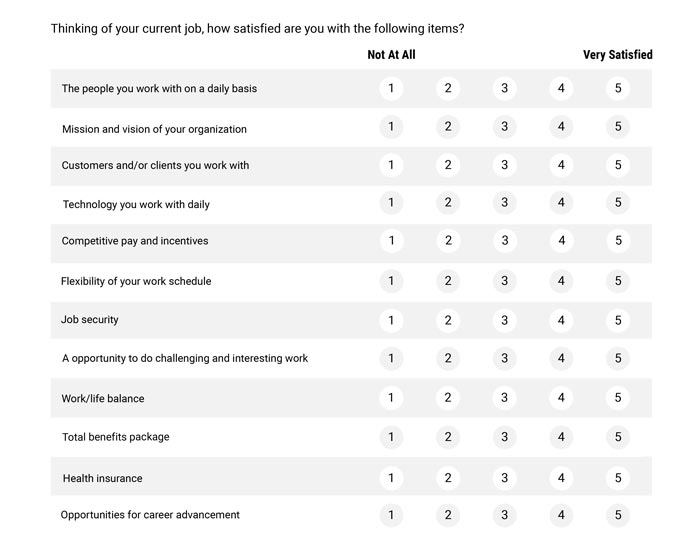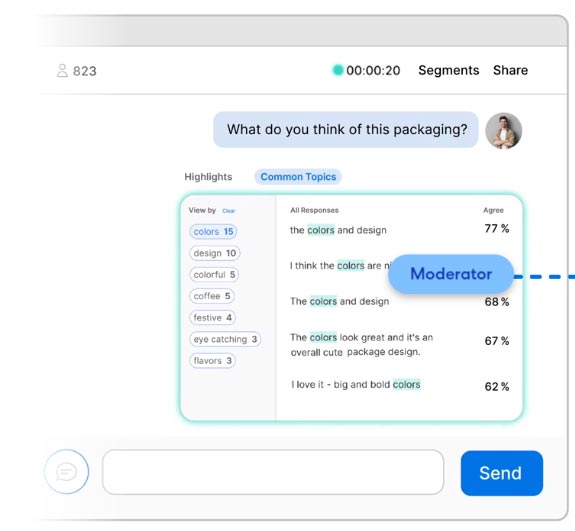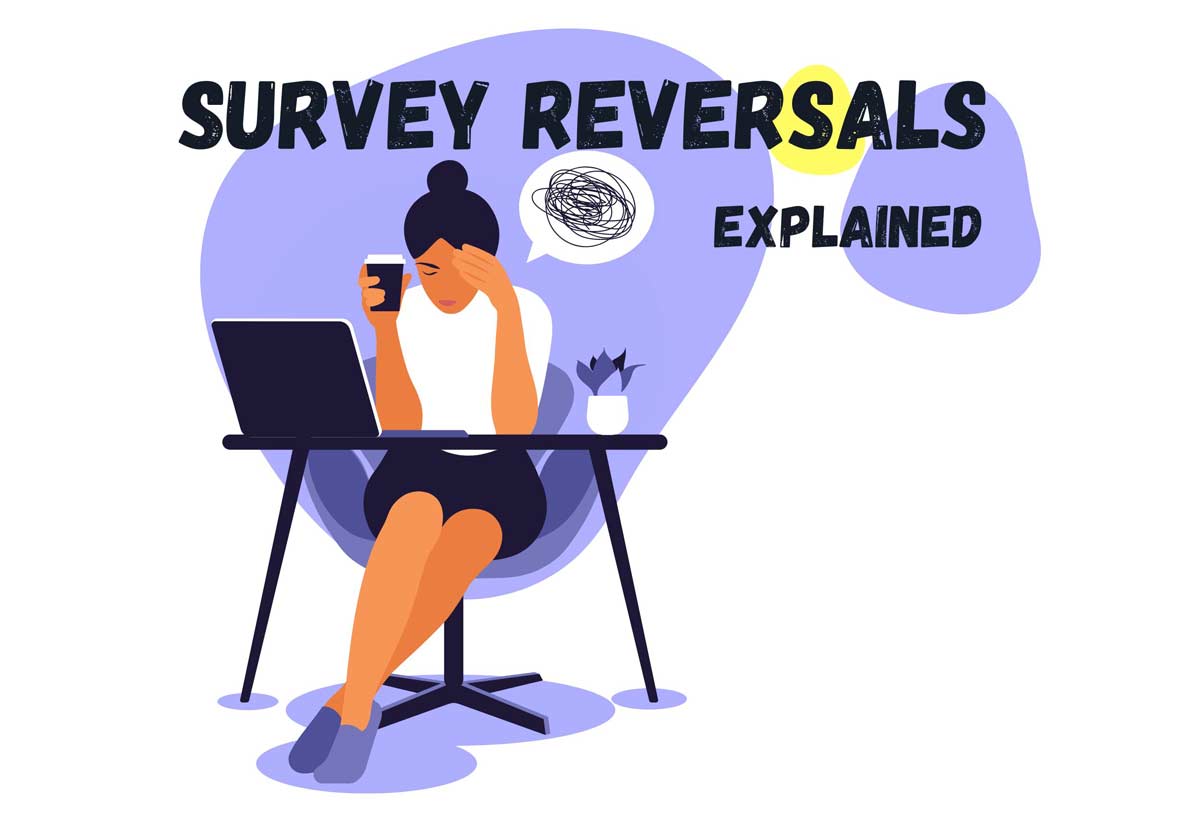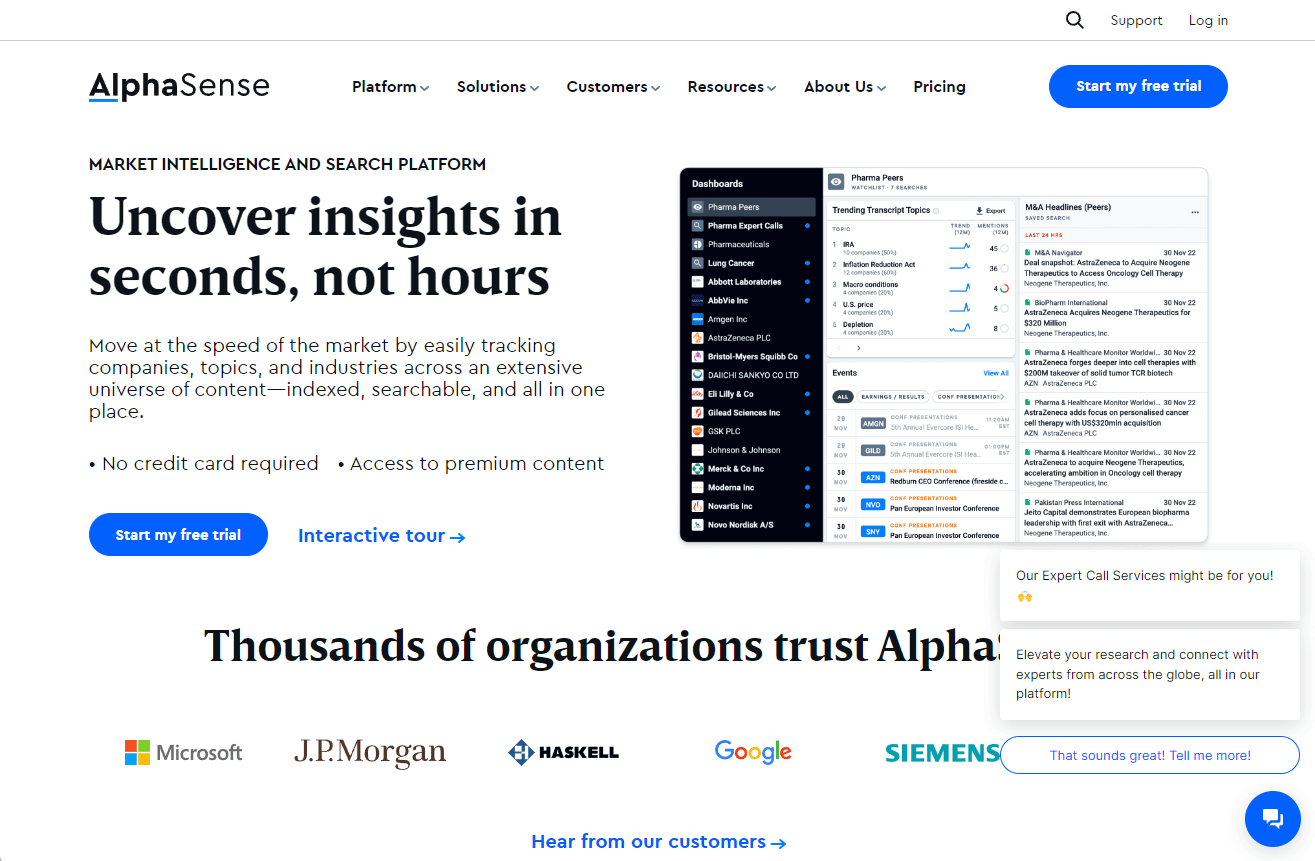Could AI-generated surveys revolutionize the user experience, making surveys more engaging, interactive, and ultimately, effective? In this blog post, we will explore how AI can be applied to market research surveys and what are the benefits and challenges of using AI for both qualitative and quantitative research.
The traditional survey experience has often been described as monotonous, time-consuming, and downright boring. Participants are bombarded with lengthy questionnaires, complicated rating scales, and an overwhelming sense of detachment from the process. As a result, response rates dwindle, and the quality of data obtained can be questionable.
Let’s delve into the realm of conversational AI and explore how it can reshape the survey landscape. We’ll discuss the limitations of traditional surveys, highlight the benefits of conversational AI, and pose critical questions surrounding its impact on the user experience.

Challenges with traditional surveys
AI is transforming various industries and domains, including market research. One of the areas where AI can have a significant impact is in surveying people. Traditionally, surveys are based on static questions that are predefined and fixed for all respondents. However, this approach has some limitations, such as:
- Survey Fatigue: Participants may be overwhelmed with the number of surveys they receive, leading to survey fatigue. This can result in reduced response rates and lower data quality.
- Lack of Engagement: Many online surveys fail to engage participants effectively. Lengthy and monotonous surveys can lead to disinterest and low engagement, affecting the quality of responses.
- Limited Attention Span: Participants may rush through surveys, providing hasty or careless responses. This can occur due to a lack of interest, time constraints, or survey fatigue. Speeding through surveys can compromise data quality and validity.
- Survey Design Issues: Poorly designed surveys can confuse respondents, leading to incomplete or inaccurate responses. Complicated question structures, ambiguous language, or biased wording can all impact data quality.

The reality is that many of the largest consumer panels are struggling with a high amount of survey reversals in combination with a high percentage of account suspensions, which often come as a result of survey fatigue among survey takers.
AI can potentially overcome these limitations by enabling dynamic conversations between the respondent and the AI agent. Instead of asking fixed questions, the AI agent can adapt the survey flow based on the respondent’s answers, preferences, and emotions.

The AI agent can also use natural language processing (NLP) and natural language generation (NLG) to understand and generate natural and engaging responses. This way, the survey can become more personalized, interactive, and conversational.
What is Conversational AI?
Conversational AI is a set of technologies that enable computer applications to process, understand, and respond to user voice and text commands in a natural way. Conversational AI can power chatbots, virtual assistants, voice assistants, and other interactive platforms that can communicate with humans.
Conversational AI uses techniques such as natural language processing (NLP), machine learning (ML), deep learning (DL), and automated speech recognition (ASR) to analyze user inputs, generate relevant outputs, and learn from feedback. Conversational AI can also use context, relevance, and personalization to enhance the user experience.
How Conversational AI Can Benefit Respondents
Conversational AI can improve market research surveys in several ways, such as:
- Survey Fatigue: AI can help combat survey fatigue by employing intelligent algorithms to optimize survey distribution. It can analyze respondents’ past survey history, preferences, and behaviour to tailor survey invitations and timing. This ensures that individuals receive relevant surveys and are not overwhelmed with excessive survey requests, reducing the chances of survey fatigue.
- Lack of Engagement: AI-powered surveys can incorporate interactive and dynamic elements to enhance respondent engagement. Chatbot interfaces, gamified features, and personalized experiences can make surveys more interactive, interesting, and enjoyable. AI algorithms can adapt the survey flow based on real-time responses, providing a more engaging and customized experience for respondents.
- Limited Attention Span: AI can assist in designing surveys that capture and maintain respondents’ attention. It can employ techniques like adaptive questioning, where the survey dynamically adjusts the question sequence based on respondents’ previous answers. AI can also utilize techniques like micro-surveys, breaking down longer surveys into shorter, focused sections that align with respondents’ attention spans.
- Survey Design Issues: AI can play a crucial role in survey design, ensuring well-structured and user-friendly surveys. Natural Language Processing (NLP) algorithms can analyze survey questions for clarity, readability, and potential biases. AI can provide suggestions to improve question-wording, format, or order to enhance comprehension and reduce ambiguity. Additionally, AI algorithms can automatically detect and flag potential design issues or inconsistencies in real-time, enabling survey creators to rectify them promptly.
Examples of Conversational AI in Market Research Surveys
Conversational AI is not a futuristic concept, but a reality that is already being used by some market research companies and platforms. For example:
- Remesh is a platform that uses conversational AI to facilitate live online focus groups with up to 1,000 participants at a time. Remesh allows researchers to ask open-ended questions to a large audience and get real-time feedback in the form of text responses, votes, ratings, and sentiments. Remesh also uses artificial intelligence to segment the audience based on their responses and generate insights based on their opinions.
- Wizu is a platform that uses conversational AI to create engaging and personalized surveys that mimic human conversations. Wizu allows researchers to design surveys using natural language, emojis, images, videos, and other interactive elements. Wizu also allows researchers to collect feedback using chatbots that adapt to the respondent’s answers and emotions. Wizu also uses artificial intelligence to analyze survey data and provide actionable insights.
- SurveySparrow is a platform that uses conversational UI to create conversational surveys that are more human-like and less boring. SurveySparrow allows researchers to design surveys using natural language, rich media, logic branching, skip logic, and piping logic etc., SurveySparrow also allows researchers to collect feedback using chatbots or voice bots that can be embedded on websites or apps or integrated with social media or messaging platforms. SurveySparrow also uses artificial intelligence to generate reports with charts.
AI-Generated Surveys in Qualitative vs. Quantitative Research
Using AI for surveys can have several benefits for both qualitative and quantitative research.
Qualitative Research
For qualitative research, AI can help elicit richer and deeper insights from respondents by asking open-ended questions, probing for explanations, and detecting emotions. For example, an AI agent can ask a respondent why they prefer a certain brand over another, how they feel about a new product feature, or what emotions they associate with a certain advertisement. The AI agent can also use sentiment analysis to measure the polarity and intensity of the respondent’s feelings.
Quantitative Research
For quantitative research, AI can help increase the response rates and data quality by reducing survey fatigue, boredom, and social desirability bias. For example, an AI agent can use gamification techniques to make the survey more fun and rewarding, such as giving feedback, points, or badges to the respondent. The AI agent can also use natural language understanding to detect when the respondent is giving inconsistent or dishonest answers and prompt them to clarify or correct their responses.
Furthermore, AI can help analyze the data faster and more accurately by using techniques such as topic modelling, text summarization, and text classification. For example, an AI agent can use topic modelling to identify the main themes and subtopics in a large corpus of text responses. The AI agent can also use text summarization to generate concise and coherent summaries of the text responses.

Challenges and Risks with AI Generated Surveys
Using AI for surveys also poses challenges and risks that need to be addressed. One of the biggest challenges is ensuring the validity and reliability of the data collected by AI agents. How can we ensure that the AI agent is asking the right questions, following ethical standards, and not influencing or misleading the respondents? How can we verify that the data is representative of the target population and not skewed by sampling or selection bias? How can we evaluate the accuracy and credibility of the data analysis performed by AI agents?
- It may require more time and resources to design, develop, and test the AI system and its questions than traditional surveys. For example, a dynamic survey conversation may need to account for various scenarios and contingencies that may arise during the interaction with the respondent, or ensure that the questions are clear, coherent, and relevant.
- It may raise ethical and legal issues regarding the privacy, consent, and transparency of the data collection and processing by the AI system. For example, a dynamic survey conversation may need to inform the respondent about how their data will be used and protected, or obtain their consent before asking sensitive or personal questions.
- It may encounter technical difficulties or errors in understanding or generating natural language or adapting to different contexts or scenarios. For example, a dynamic survey conversation may face challenges in interpreting the respondent’s tone, intent, or sentiment, or in generating appropriate and natural responses that match the respondent’s style and expectations.
- Too much reliance on programmatic solutions through AI could also increase the risk of false positives when identifying inattentive and fraudulent respondents. Several panel sites have already become known for quickly suspending accounts based on fully automated systems, with very little room for individual follow-up.
Another challenge is ensuring the trust and acceptance of the respondents and the market researchers towards AI agents. How can we ensure that the respondents are comfortable and willing to share their opinions and feelings with an AI agent? How can we ensure that the market researchers are confident and satisfied with the data collected and analyzed by AI agents? How can we ensure that the human-AI interaction is respectful, transparent, and accountable?
Will AI replace the need for online survey takers?
On one hand, proponents argue that analytical solutions based on AI and data intelligence have the potential to greatly reduce the need for traditional market research, including surveys.
With the vast amount of data available today, AI algorithms can process and analyze this data at an unprecedented scale and speed, providing valuable insights and patterns that were once only achievable through time-consuming and costly surveys. Here are a few points in favour of this perspective:
- Efficiency and Cost-effectiveness: AI-powered analytics can quickly process massive datasets, allowing businesses to gain insights in a fraction of the time required for traditional surveys. This efficiency translates into cost savings, as resources previously allocated to conducting surveys can be redirected to other areas of research and development.
- Real-time and Continuous Monitoring: Analytical solutions can provide real-time monitoring of consumer behaviour, market trends, and competitor analysis. Instead of relying on periodic surveys, businesses can have access to up-to-date information, enabling them to make agile and informed decisions promptly.
- Unbiased and Objective Insights: AI algorithms can analyze data objectively, eliminating potential biases that may arise from traditional survey methods, such as respondent bias or question-wording bias. This impartiality enhances the reliability of insights and reduces the risk of skewed results.
- Enhanced Data Accuracy and Depth: AI-powered analytics can leverage various data sources, including social media, online reviews, and customer interactions, to gain a comprehensive understanding of consumer sentiments, preferences, and trends. This multidimensional approach surpasses the limitations of surveys, which often rely on self-reported data and may not capture the full scope of consumer behaviour.
On the other hand, sceptics argue that while AI and data intelligence offer valuable tools for market research, they cannot entirely replace traditional surveys. Here are some counterpoints to consider:
- Sample Bias and Representativeness: Surveys, when properly designed and conducted, allow researchers to control for sample bias and ensure the representativeness of the target population. AI-powered analytics heavily rely on existing data, which may have inherent biases or exclude certain segments of the population, leading to incomplete or skewed insights.
- Contextual Understanding and Nuanced Insights: Surveys allow researchers to probe deeper into respondents’ thoughts and motivations by asking follow-up questions, exploring nuances, and capturing qualitative data. AI algorithms, although proficient at processing vast amounts of quantitative data, may struggle to grasp the intricacies and context of human experiences, limiting their ability to provide nuanced insights.
- Specific Research Objectives: While AI and data intelligence can provide valuable information about consumer behaviour, surveys are often tailored to address specific research objectives. They allow researchers to ask targeted questions, test hypotheses, and collect data on variables of interest, which may not be readily available through existing datasets.
- Ethical and Privacy Concerns: The use of AI and data intelligence raises ethical concerns regarding privacy, data protection, and consent. Surveys, when conducted ethically and transparently, provide an opportunity for participants to willingly share their information and opinions, ensuring their rights are respected. AI algorithms that rely on existing data may raise questions about consent and the ethical use of personal information.







